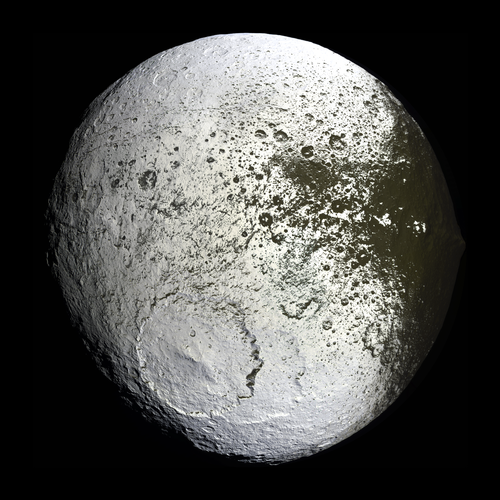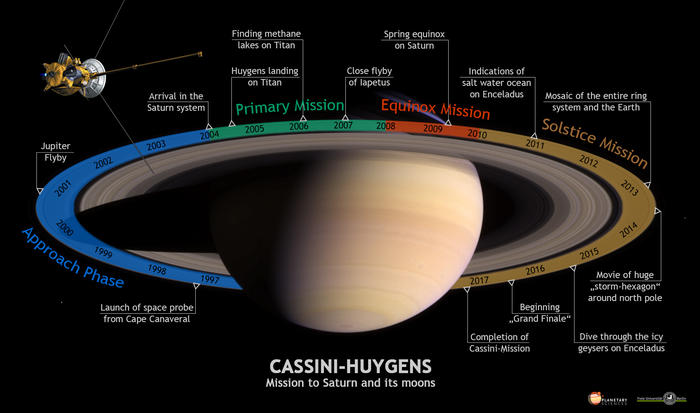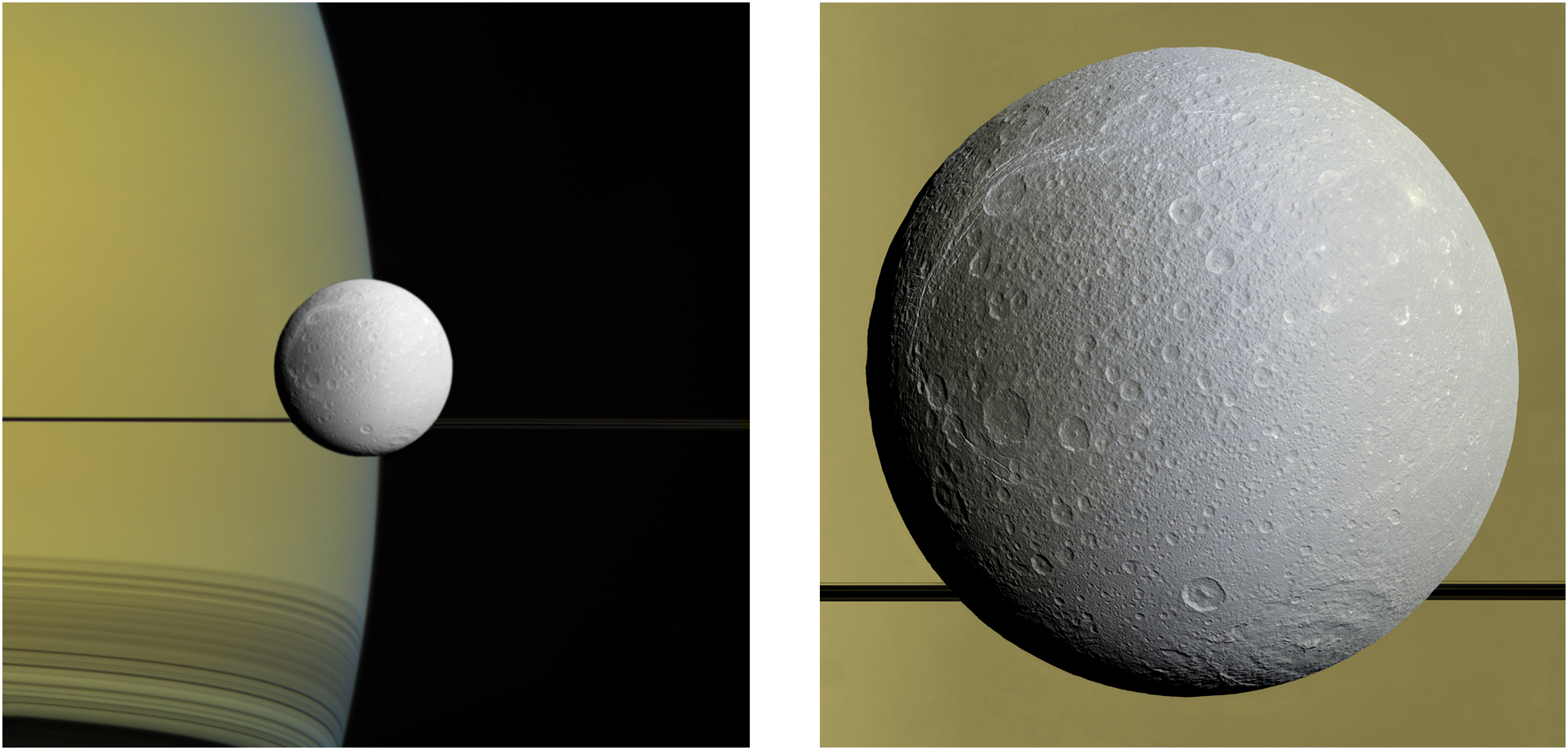Department of Earth Sciences
Service Navigation
Planetary Sciences and Remote Sensing Participation
The Planetary Sciences and Remote Sensing Group was directly involved in the Cassini mission for many years. From 1991 to 2014 Prof. Neukum† was a Science Team Member of the Imaging Science Subsystem experiment (ISS) on the orbiter Cassini. Tilmann Denk has been appointed Cassini Participating Scientist in 2013, and Prof. Jaumann was Co-Investigator in the team of the spectrometer experiment (VIMS) on Cassini.
The project has been funded at Freie Universität Berlin since 2003 by the National Space Administration with means of the Federal Ministry for Economic Affairs and Energy. The last approved period of funding was from July 2015 to December 2019 (ref.no. 50 OH 1503).
Observation strategy
A major task was to plan the camera observations of the Saturnian moons Iapetus, Dione, Rhea, Phoebe and the outer moons. The planning was conducted in close co-operation with the Jet Propulsion Laboratory (JPL) of NASA in California, with the Space Science Institute in Colorado and with the DLR Institute of Planetary Research:
- Definition of the time schedules for the targeted and remote moon flybys
- Negotiations with other instrument teams to coordinate the short observation times
- Preparation and implementation of the entire observation plan for the outer moons
- Preparation of the camera control files (moment of exposure, exposure time etc.) and partly of the commands for the position control of the Cassini probe
Scientific evaluation of data
Immediately after the reception of the data, the systematic processing and evaluation could be initiated. The first images of the Saturnian moons reached Earth in June 2004. Until the end of the mission, Cassini transmitted significantly more than 400.000 exposures. The image data is the basis for working on the following research topics:
- Age determination of solid surfaces in the Saturnian system (by means of crater size-frequency distributions)
- Evolution of the bright-dark dichotomy on Iapetus (globally and locally)
- Geological evolution of the moons
- Research on meteorite bombardment
- Research on physical features of the outer moons (rotational periods, polar axes, shape etc.)
Participants in the Cassini project team
- Prof. Dr. Frank Postberg Project leader
- Prof. Dr. Ralf Jaumann VIMS Science Team Member
- Tilmann Denk (contact person) Participating Scientist and ISS Team Associate, observation strategy and image data evaluation
- Heike Rosenberg Data and image processing, web, public outreach


